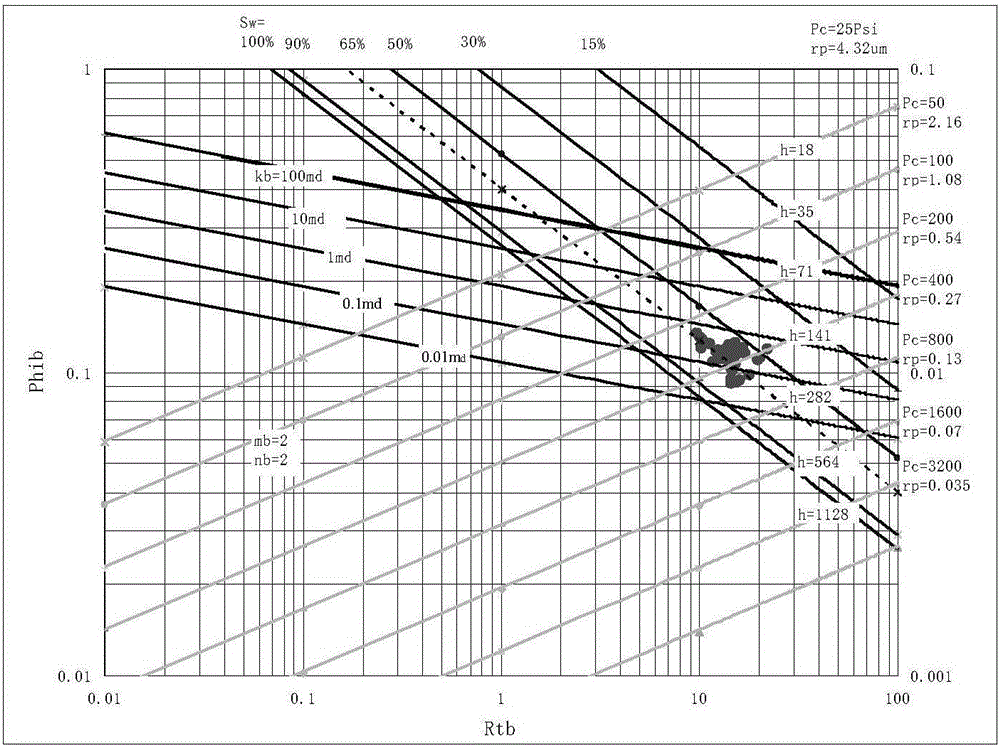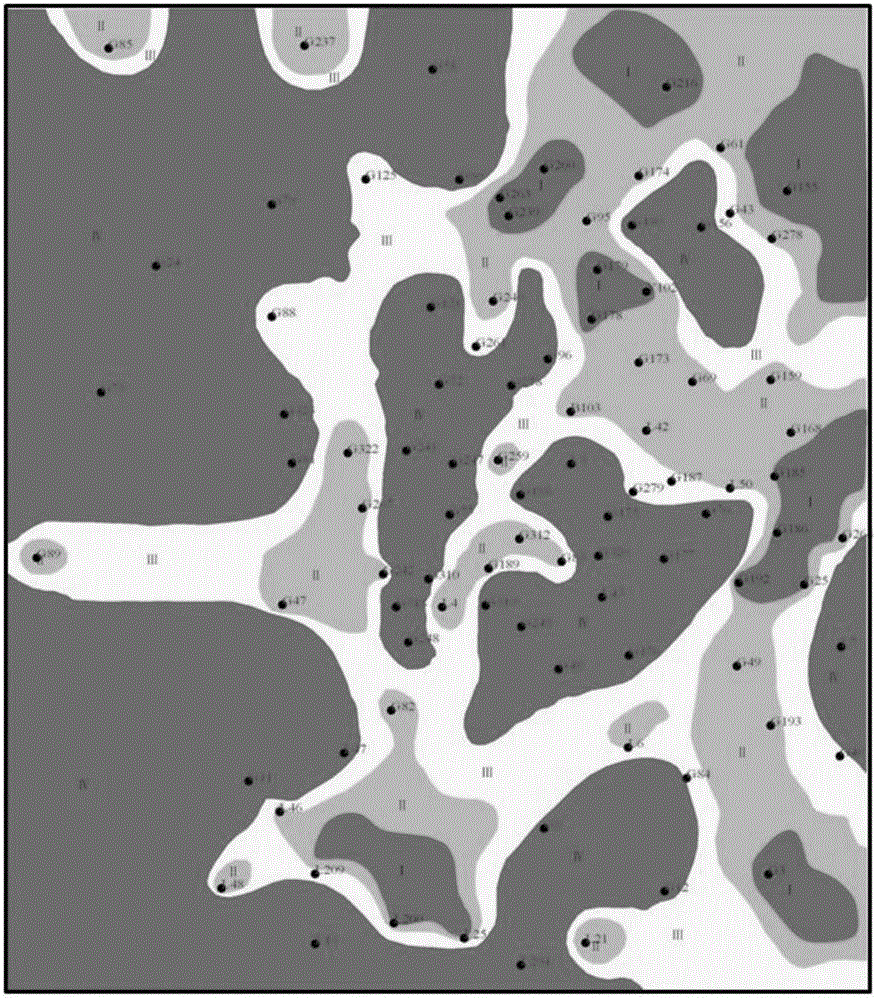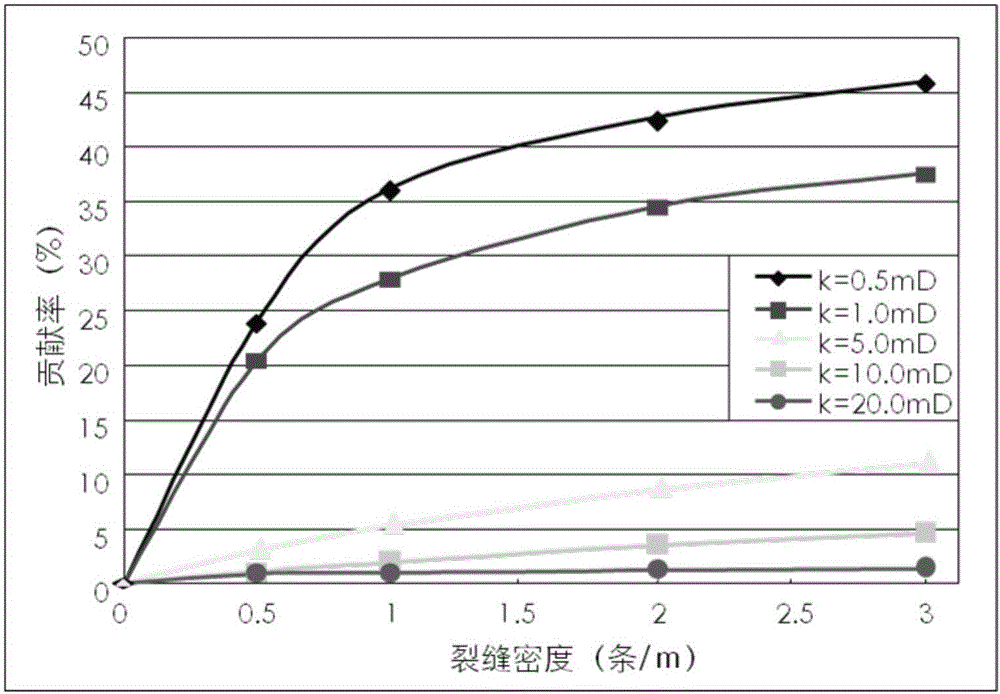Fractured oil and gas reservoir quantitative evaluation method
A quantitative evaluation, oil and gas reservoir technology, applied in special data processing applications, instruments, electrical digital data processing, etc., can solve problems such as the inability to quantitatively evaluate fractured oil and gas reservoirs, and achieve the effect of improving evaluation efficiency and reducing risk costs.
- Summary
- Abstract
- Description
- Claims
- Application Information
AI Technical Summary
Problems solved by technology
Method used
Image
Examples
Embodiment 1
[0033] A quantitative evaluation method for fractured oil and gas reservoirs, comprising the following steps:
[0034] (1) Using core, logging and test analysis data, determine matrix pores and oil and gas enrichment rules, analyze reservoir heterogeneity, and divide reservoir units;
[0035] (2) Using logging, 3D seismic and stress-strain analysis to predict the distribution of fractures, evaluate the anisotropy of fracture permeability, and divide seepage units;
[0036] (3) Evaluate the matching relationship between matrix pores and fractures, and divide storage and seepage units;
[0037] (4) Quantitatively evaluate the contribution rate of fractures to reservoir production.
[0038] Further, step (1) uses core, well logging and test analysis data to determine matrix pores and oil and gas enrichment laws, analyze reservoir heterogeneity, and divide reservoir units into: using core, well logging and test analysis data, Obtain the distribution of reservoir matrix porosity,...
Embodiment 2
[0055] A quantitative evaluation method for fractured oil and gas reservoirs, the main points specifically include: (1) Using core, logging and test analysis data to determine matrix pores and oil and gas enrichment laws, analyze reservoir heterogeneity, and divide reservoir units (2) Using logging, 3D seismic and stress-strain analysis to predict fracture distribution, evaluate fracture permeability anisotropy, and divide seepage units; (3) Use cluster analysis to evaluate the matching relationship between matrix pores and fractures, and divide (4) Quantitatively evaluate the contribution rate of fractures to reservoir production. Specific steps are as follows:
[0056] Step 1: Determine matrix pores and oil and gas enrichment rules, analyze reservoir heterogeneity, and divide reservoir units. Using core, logging and test analysis data, through the analysis of rock physical properties and pore structure characteristics of the reservoir matrix system, a logging interpretation...
PUM
 Login to View More
Login to View More Abstract
Description
Claims
Application Information
 Login to View More
Login to View More - R&D
- Intellectual Property
- Life Sciences
- Materials
- Tech Scout
- Unparalleled Data Quality
- Higher Quality Content
- 60% Fewer Hallucinations
Browse by: Latest US Patents, China's latest patents, Technical Efficacy Thesaurus, Application Domain, Technology Topic, Popular Technical Reports.
© 2025 PatSnap. All rights reserved.Legal|Privacy policy|Modern Slavery Act Transparency Statement|Sitemap|About US| Contact US: help@patsnap.com



